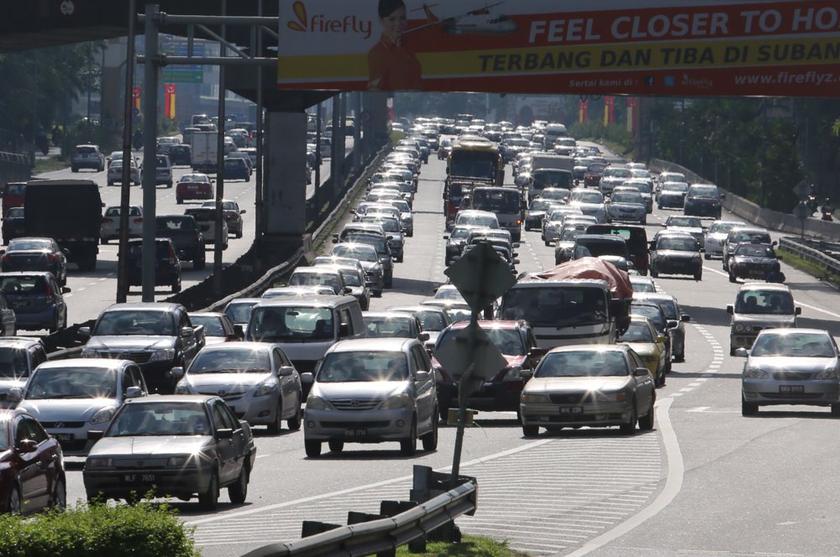KUALA LUMPUR, May 22 — Malaysia’s capital is the fifth most expensive city to buy a new mid-size car when compared against 54 other cities globally, but ironically has the fourth cheapest petrol prices, a survey has shown.
In Deutsche Bank’s latest annual survey results, getting a new car equivalent to the Volkswagen Golf without any extras in Kuala Lumpur would cost a whopping US$36,323, (RM152,026) although this is lower than in 2018 (US$37,057) and in 2014 (US$55,889).
This means it is 55 per cent more expensive in Kuala Lumpur as compared to New York to purchase a new car of such size, based on Expatistan figures used in Deutsche Bank’s eighth annual survey.
Singapore is unbeatable in this survey of 55 cities, where it is the most expensive city to get such a car at US$76,313 although it has also fallen from 2018 (US$86,412) and 2014 (US$126,792).
Using this year’s prices, Singapore’s US$76,313 rate is 225 per cent higher than if one were to buy an equivalent car in New York at US$23,454.
Others in the top 10 priciest cities this year to buy such a car are Denmark’s Copenhagen (US$39,904), Norway’s Oslo (US$39,273), Bangladesh’s Dhaka (US$37,579) — — all preceding Kuala Lumpur, which is then followed by Indonesia’s Jakarta (US$34,263), Japan’s Tokyo (US$30,682), Finland’s Helsinki (US$30,003), the Netherlands’ Amsterdam (US$29,317) and Portugal’s Lisbon (US$28,450).
The Deutsche Bank’s eighth edition of its “Mapping the World Prices” report did not however provide explanations for most of the cities surveyed including Kuala Lumpur in terms of car prices, except to remark that: “For those living in Singapore, Copenhagen or Oslo, you are actively discouraged from buying a new car as policy makes it extraordinarily expensive. So maybe walk or ride a bike more there.”
Based on local news reports, however, Kuala Lumpur’s slot in the top 10 expensive cities could possibly be due to the country’s national policy of keeping imported cars pricey with the use of taxes to protect or help locally-manufactured cars to compete in the market.
Not included in the Deutsche Bank report are figures that indicate Malaysians’ seeming addiction to or obsession with cars, along with other private vehicles.
Transport Minister Anthony Loke was reported saying last November that the number of registered vehicles in Malaysia is expected to hit 31 million by 2030, while car news site Paultan.org had previously reported that the number of registered vehicles as of June 30, 2017 is at 28,181,203 units — which includes 13,288,797 cars, 12,933,042 motorcycles, 185,035 public service vehicles comprising taxis, buses and private hire vehicles.
The total population of Malaysia stands at an estimated 32.66 million inclusive of 29.31 million citizens as of the first quarter of 2019, according to the Department of Statistics of Malaysia’s latest figures.
Gas up
Fuelling the thirst for vehicles are the relatively low fuel prices in Kuala Lumpur, as seen in the Deutsche Bank survey where the city comes in as the fourth cheapest out of 55 cities to buy one litre of “gas” or petrol at US$0.53 this year. This price is down from US$0.54 (2018) and US$0.64 (2014).
The three cities cheaper than Malaysia when it comes to petrol prices are Egypt’s Cairo at US$0.39 per litre (cheapest of 55 cities), Saudi Arabia’s Riyadh and Nigeria’s Lagos both at US$0.40.
The Expatistan figures used in the survey do not specify the type of petrol used in the price comparisons. (The Malaysian government currently subsidies the price of the RON95 petrol and caps it at RM2.08 per litre, while the local pump price for RON97 petrol follows market rates.)
The seventh highest price this year for one litre of petrol can be found in Singapore at US$1.61, as compared to 13 other cities with more expensive prices including the top three of Hong Kong at US$2.04, Oslo (US$1.85) and Amsterdam (US$1.78)
Public transport instead?
Kuala Lumpur is the ninth lowest out of 55 cities surveyed this year when it comes to monthly tickets for public transport at US$26.10, sandwiched in between neighbours Jakarta (US$28.70) and Manila (US$24.90).
For places where buying a car or petrol is relatively high, monthly public transport costs seem to be at mid-rank with Helsinki as the 27th priciest at US$61.30, Singapore ranked the 26th priciest this year at US$66.70, just below Hong Kong at US$67.20 (25th priciest), Copenhagen (US$70, 23rd priciest) and Oslo (US$87.20, 17th priciest).
Using Expatistan figures, the survey does not specify what “monthly ticket public transport” indicates, including whether it is for tickets purchased in a month or perhaps even monthly travel passes which is currently offered by Kuala Lumpur’s major public transport operator RapidKL.
Perhaps mirroring its ranking as the fourth cheapest city to buy petrol, Kuala Lumpur is also where the fifth cheapest price for a taxi trip covering eight kilometres on a business day can be found out of all 55 cities surveyed this year.
The taxi tariff for such a trip in Kuala Lumpur costs US$4.80 this year, down from US$5.40 in 2018 and up from US$4.60 in 2014.
Kuala Lumpur’s taxi fare prices are only beaten by Jakarta (US$4.30), Cairo (US$3.60), India’s New Delhi and Mumbai both at US$3.20 and Bangalore at US$3.
The 10th cheapest taxi fare prices out of 55 cities this year can be found in Manila at US$6.20 for a similar trip on a business day, cheaper than Singapore’s US$8.80 (18th cheapest) and Hong Kong’s US$9.40 (20th cheapest), based on Expatistan figures cited in the Deutsche Bank report.
Out of 40 cities surveyed this year, Kuala Lumpur has fairly competitive daily car rental rates at US$84.60 (18th cheapest) which is cheaper than Singapore’s US$100.50 which is four rungs away, but is slightly pricier than Manila’s US$75.60 (14th cheapest).
The top three most expensive cities for daily car rentals are London US$172.40, followed by Jakarta (US$161.70) and Hong Kong (US$160.60), with the survey based on Avis Car Rental rates except for Europcar in Tokyo.



















